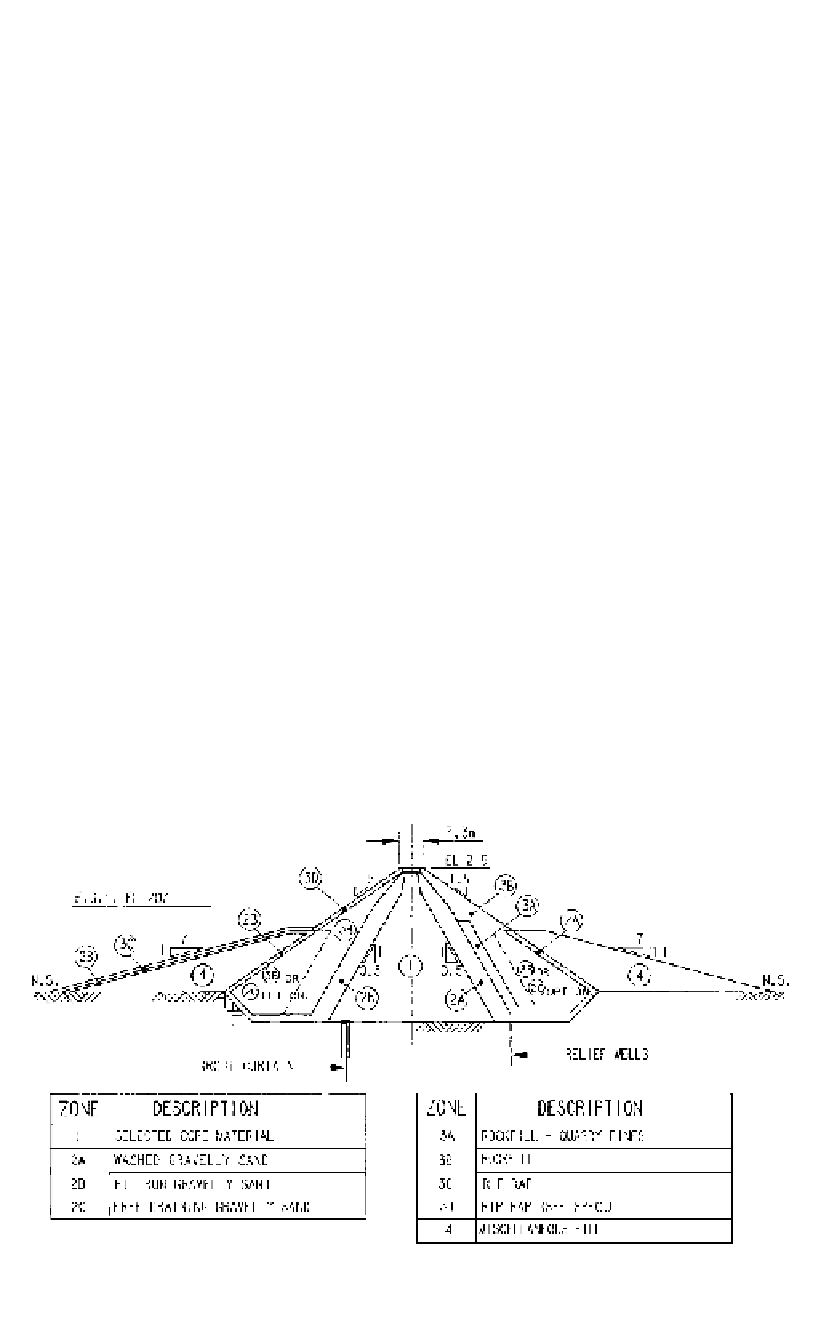Environmental Engineering Reference
In-Depth Information
8.4.2
Foundation conditions
The strength, permeability and compressibility of the dam foundation have a major influ-
ence on the embankment type, e.g.:
-A soil foundation will have a relatively low strength, which may determine the
embankment stability, and will require relatively flat embankment slopes. Such a for-
mation is likely to favour construction of earthfill dams, i.e. earthfill with horizontal
and vertical drains, rather than earth and rockfill;
-A permeable soil foundation will be susceptible to leakage and erosion, requiring con-
struction of some form of cutoff and a filter drain under the downstream slope of the
dam (see Chapter 10);
-A strong low permeability rock foundation is suited to any type of dam construction,
but may favour construction of a concrete face, concrete gravity or, in particular cases,
concrete arch dam.
-
In earthquake zone areas, the presence of loose to medium dense saturated sandy soils
in the foundation will be important, as liquefaction may occur during earthquakes.
This may necessitate removal or densification of the sandy soil and/or the provision of
weighting berms;
-
Dams on karst limestone foundations are a special case, where extensive grouting and
other work may be needed to limit leakage to acceptable levels. Such situations favour
adoption of a design, which allows for grouting to continue during embankment con-
struction or after it is completed. This may tend to favour concrete face rockfill or earth
and rockfill with a sloping upstream core;
-
In some sedimentary rocks, particularly interbedded weak claystone and mudstone and
strong sandstone, which have been subject to folding and/or faulting, bedding plane
shears may exist, resulting in low effective friction angles (Hutchinson,1988, Casinader,
1982). In these cases, flat slopes may be required on the embankment, favouring earth-
fill with vertical and horizontal drains, or earth and rockfill with random rockfill zones.
Figure 8.14 shows the cross section for Maroon Dam, where such conditions required
very flat slopes;
Figure 8.14.
Maroon Dam (courtesy of Water Resources Commission of Queensland. Note: Drawing is
not to scale).

